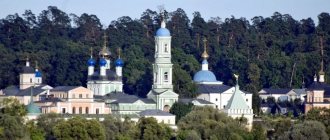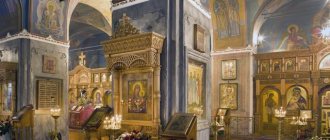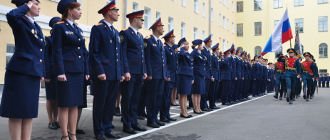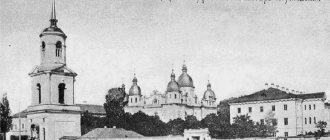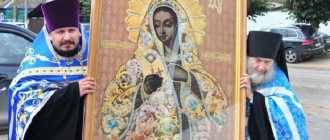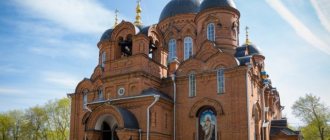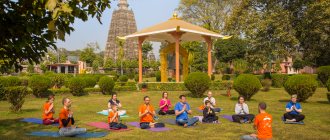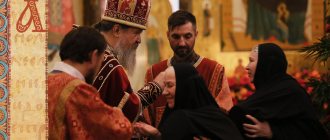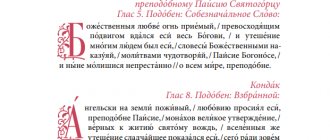CORRESPONDENCE DEPARTMENT OF THE DON THEOLOGICAL SEMINARY
The correspondence department at the Don Theological Seminary was created with the blessing of the administrator of the Don Metropolis, Metropolitan of Rostov and Novocherkassk Mercury. The purpose of creating a correspondence education sector at the Don Theological Seminary is the opportunity to teach high-quality spiritual education to the clergy, monasticism and laity of the Don Metropolis, without interrupting the church obediences entrusted to them. The correspondence sector of the DDS is intended for training and advanced training of clergy and monastics of the Don Metropolis, as well as laity serving in diocesan departments with complete secondary or higher education. The correspondence department at the Don Theological Seminary accepts clergy of the Russian Orthodox Church, monastics, those in parish service, diocesan, monastic or parish obedience, who are not under ecclesiastical ban or on staff. Also lay people under 55 years of age who carry out obediences in diocesan departments and deaneries and are recommended for training by the Ruling Bishop. Persons with basic higher secular or incomplete theological education can be enrolled in 2-3 years of seminary. In some cases, with the blessing of the seminary administration, studying according to an individual plan and passing exams as an external student are allowed. When studying in the correspondence sector of the Don Theological Seminary, the curriculum for the bachelor's degree program is implemented. The duration of study in the correspondence sector is 5 years.
Clergy and monastics are admitted to the Correspondence Department of the DDS without entrance exams on a competitive basis. Lay people are accepted into the correspondence education department with the blessing of their confessor and the recommendation of the diocesan bishop based on the results of exams on a competitive basis. Persons who have a complete secular or incomplete higher theological education based on the submitted documents, based on the results of the interview and passing the academic difference during the first semester, can be enrolled in the 2nd or 3rd year of the seminary. Education at the correspondence department at the Don Theological Seminary is regulated
Story
The first regular theological educational institution in the Kaluga region itself was the Kaluga Theological School, opened in 1775, which was immediately called a seminary.
Initially, the school was located in Kaluga, on Zhirovka, in a government building. Its official opening in the Laurentian Monastery took place in 1776, with the participation of Metropolitan Platon, who arrived in Kaluga on the occasion of the opening of the Kaluga governorship. Metropolitan Platon personally took care of the material support of the newly opened seminary. In addition to the 300 rubles a year he asked from the empress, he himself sent additional funds several times.
In 1800, the seminary from the Laurentian Monastery was transferred to a building near the Trinity Cathedral, which until 1880 housed the bishop's house. In the same year, rhetorical and philosophical classes were opened, and in 1802, theological classes.
When ep. A seminary dormitory was also opened in Evlampiya (Vvedensky), but by 1809 only 20 people lived in it, the rest in private apartments.
Despite the large total number of students, there were few high school graduates, since almost no one completed their full course. Therefore, for a long time, even priestly positions could not be filled by people with education, and the bishops had to ordain semi-literate heirs to the positions who did not even know the basic tenets of the faith. Even in Kaluga itself there were no educated clergy until the 1820s, with the exception of a few people. So, in 1826, one deacon at the exam with the bishop. Gregory (Postnikov) answered that “the Son of God is not born,” and one city priest confused the Son of God with the Holy Spirit and had no idea about the Holy Scriptures, admitting that “he does not know the Christian truths behind cultivating the land.” The situation changed only after the seminary was separated from the school in Kaluga, and only those who graduated from it could hope to get a worthy place.
Ep. Evlampius (Vvedensky) sent a commission to the monasteries of the diocese to find out where it was possible to locate a theological school that would relieve the burden on the seminary. The commission, having visited the Pafnutyev-Borovsky monastery, Likhvinsky, Pokrovsky-Dobry, Meshchovsky Georgievsky monastery, chose the first one to establish a school. The theological school was opened after Easter 1810. City clergy were supposed to teach there, and only the prefect received payment (200 rubles), while the rest were supposed to perform their duties “without salary, and expect a reward for this from the highest spiritual authorities of the diocese.”
In 1811, a church in the name of John the Theologian was built in the Kaluga seminary building. By the time the church was built, there were already up to 900 students in the seminary.
In 1812, the seminary was evacuated to Orel, and its building housed a military hospital.
In 1814, Bishop Evgeniy (Bolkhovitinov) began separating the Kaluga Seminary from the school. For this purpose, for 71 thousand rubles. Bilibin's house was purchased, the renovation of which lasted until 1840, while the relocation of the school to a new building lasted another five years.
In 1900, an audit was carried out at the seminary, which discovered major shortcomings in the management of the seminary, which led to unrest among students and insubordination of their superiors. As a result of the audit, the rector of the seminary was fired and students were exposed for bad behavior, but such strict measures as dismissal were not applied to them. Many years of mismanagement of the seminary made themselves felt later. Circles, mostly of a socialist orientation, were very popular among students [1].
According to the decree of December 2, 1917 on the transfer of religious educational institutions to the jurisdiction of the former Ministry of Public Education, all religious educational institutions, including the Kaluga Theological Seminary and School, were closed, and their property was transferred to the People's Commissariat of Education.
In 1992, a religious school was reopened in Kaluga.
In 1996, the school was transformed into a seminary, with a transition to a four-year course of study. The training programs are focused on the course of the Moscow Theological Seminary.
In 2000, a transition was made to a five-year course of study; the educational process was built on the basis of a five-year seminary program developed by the Education Committee.
With music along the way
Most of the children studying at the Kursk Theological Seminary had no previous experience in music education. For future priests, singing is one of the main subjects. As experience shows, an ear for music and abilities appear even in those who previously had no idea about their abilities.
The regency department of the institution is located at the Kazan Church of the city, a famous church built at the expense of the mother of St. Seraphim of Sarov - a child who tripped on the scaffolding of the bell tower of this majestic cathedral, and miraculously remained unharmed.
Over two and a half centuries, the regency department has trained many singers and regents not only for the Kursk metropolis, but also for neighboring dioceses. Preparation of training is carried out according to the specialist program for a period of 3 years on a full-time basis. Persons under 25 years of age are accepted for study without musical education, and with musical education up to 35 years of age. The main criterion for admission is the presence of musical abilities.
Used materials
- Pages of the official website of the Kaluga diocese
- Named list of rectors and inspectors of theological academies and seminaries, teachers of theological academies and monastics, caretakers and assistant caretakers of theological schools... for 1896, 1917 // Synodal Printing House, St. Petersburg, 1896, p. 54; 1917, c. 69.
[1] Hegumen Damascene (Orlovsky). “Martyrs, confessors and devotees of piety of the Russian Orthodox Church of the twentieth century. Biographies and materials for them. Book 7" Tver. 2002. pp. 152-157 —
[2] Biographical dictionary of graduates of the Kyiv Theological Academy: 1819-1920s. Materials from the collection of prof. Archpriest F.I. Titov and the KDA archive in four volumes. Volume II. K-P. // Publishing department of the Ukrainian Orthodox Church, Kyiv 2015, p. 232.
[3] A.V. Zhuravsky Belyaev Nikolai Yakovlevich
, “Orthodox Encyclopedia”, Vol. 4, pp. 591-592 dated May 3, 2009,
School routine and more
About two hundred people study and live on the territory of the Kursk Theological Seminary. The life of students is very measured, but eventful. Every day in the first half of the day, students go to pairs in special and specialized subjects. From Monday to Friday, great attention is paid to all important church aspects of future confessors and church workers. On Saturdays, students listen to lectures on the art of cinema, and then watch films: world and domestic classics, feature films and documentaries.
In any weather, students play football on a small sports ground in the center of the seminary garden. This is not only a physical education lesson, but also a wonderful vacation.
Seminary today
Kursk Orthodox Theological Seminary today is one of the best educational institutions in the Kursk region. On its territory today there are three professional departments that train specialists in the following fields: shepherd, regent and icon painter. After graduation, each student receives a state diploma and also the honorary title of seminary graduate.
Few educational institutions existing in Russia today have such a huge territory or, as teachers jokingly say, “Kursk Oxford”. The seminary today works with a special focus for itself - cultural studies. Everyone who teaches and lives there works to create an unusually creative and soulful atmosphere of culture and creativity.
As the old master artists bequeathed
The icon painting department at the Kursk Orthodox Theological Seminary is a special creative environment with a deep missionary purpose. The main task of the department is to teach students to understand worship and transfer it to painting. The seminary becomes specialists not only in the field of icon painting, but also in other areas of church applied art. The training lasts for a period of 5 years according to the full-time specialist program.
It is important for a true icon painter to understand the fields of culture and art. This is the main criterion for admission. But the subjects in the icon painting department during training, in addition to the major ones, are also theological and historical, the general history of the Russian church.
Rectors
- Venedikt (Grigorovich) (September 1821 - August 31, 1829)
- Vladimir (Alyavdin) (September 25, 1829 - December 5, 1834)
- Israel (Lukin) (1835 - 1843 [2])
- Theophylact (Gubin) (May 3, 1850 - December 11, 1857)
- Agapit (Lopatin) (1858 - 1860)
- Gerasim (Dobroserdov) (1860 - 1863)
- Joseph (Bazhenov) (July 10, 1870 - December 18, 1873)
- Misail (Krylov) (April 9, 1878 - October 23, 1879) acting
- Kliment (Kapalin) (1996 - May 29, 2013) acting
Famous graduates
- OK. 1800-1805 - Jason (Nikolsky), archimandrite.
- 1840 - Amfilohiy (Sergievsky-Kazantsev), bishop. Uglichsky
- 1851 - Veniamin (Smirnov), bishop. Voronezh
- 1858 - John (Metropolitan), bishop. b. Aksai
- 1864 - Nikolai Belyaev, prof. KazDA [3]
- 1879 - Nicodemus (Preobrazhensky), bishop. Zabaikalsky
- 1882 - Nikifor (Nikolsky), archbishop. b. Kalininsky
- 1894 - schmch. Georgy Izvekov, prot.
- 1900 - Lebedev Nikolai Mikhailovich, prof. MDA
- 1904 - sschmch. Sergius Pokrovsky, prot.; Gleb (Pokrovsky), archbishop. Permian
- 1998 - Anthony (Pukhkan), bishop. Korsun-Shevchenkovsky; Theodosius (Snigiryov), archbishop. Cherkassky
- 2000 - Igor Nagaytsev, priest.
